EPtalk by Dr. Jayne 3/7/24
I was hanging out with some medical friends the other night, and as it happens when adult beverages are involved, the conversation was all over the place. We were talking about patient education, and one of my colleagues who is fairly new at working directly with patients admitted to having used ChatGPT to help him formulate an answer to the question of “What is a placenta?” while keeping the answer at the level a 12-year old could understand.
It points out the importance of answering questions in language that patients can comprehend, especially when medical folks are used to using larger words and entirely too many Latin phrases. Patient education is important as are communication skills, but both tend to be undervalued in healthcare today. As a side note, following that conversation I decided it would be cool to be able to peek behind the curtain of the commercially available generative AI solutions to see the kinds of questions that are being asked by the general public.
Other hot topics include a local hospital tasked with cutting 10% of its frontline nursing staff to help balance the books. Although I understand the slim margins that most hospitals operate under, I doubt that cutting nursing staff is going to be a positive as far as patient safety, nurse-to-patient ratios, or patient and family satisfaction. They’ve already gotten rid of their weight management program, which doesn’t make sense given the obesity epidemic and people’s willingness to pay cash out of pocket for obesity drugs. In addition, they’ve eliminated a number of physicians and service lines related to women’s and children’s health. I’m sure if the community knew what was going on there would be an outcry, but the hospital has been keeping it pretty hush-hush.
From Burned Out PCP: “Re: AI. What do you think about this article that looks at AI as the solution to the primary care physician shortage? I’m hanging up my stethoscope because I can’t take it any more. Thankfully, my ability to do clinical informatics work is serving as a lifeboat.” The article does a nice job summarizing some of the statistics, including the staggering savings the US could realize ($67 billion) if everyone had a primary care provider, as well as the projected primary care physician shortage ballparked in the neighborhood of 40,000 physicians by 2034. The author summarizes some of the factors contributing to primary care physician burnout, such as the fact that “most doctors enter the profession because they want to build trusting, long-term relationships with patients and see them get healthier. Instead, primary care has increasingly become short-term and transactional.”
I agree with this statement. It has been difficult to watch the erosion of respect for primary care practice since I graduated from residency training. Generational values have shifted and it feels like patients no longer value those relationships. Healthcare costs and economic realities have pushed patients to select convenience over comprehensiveness and low-cost over longitudinal relationships.
The author lists the likely suspects for AI tools to assist physicians, including digital scribing and documentation. They also include the ability to digest information from physician notes, laboratory and imaging reports, and other documents to create a more useful view of the patient and to identify potential gaps in care or recommendations for changes to the treatment plan. I don’t feel like the author really added much to the current understanding of the role of AI, and assumed it was a generic op ed piece until I got to the author info at the bottom which identified the writer as the chief medical officer for Amazon Health Services. I think I would have expected a bit more from someone in that role, especially with an article that appeared in Fortune, but that’s just me.
The US Food and Drug Administration has authorized a “first of its kind” feature for the Samsung Galaxy Watch, intended to assist with management of sleep apnea. The feature allows users over the age of 22 who have not been previously diagnosed with the condition to conduct a two-night monitoring period. I know from my experiences tent camping at a variety of locations that there are plenty of people with sleep apnea out there. Of course, some of them are likely diagnosed but haven’t figured out the logistics of bringing a CPAP machine to the woods, but I suspect a number of them are undiagnosed. Perhaps I need to start dropping hints to my camping friends who are on team Android.
The US Department of Health & Human Services (HHS) has recently published a notice in the Federal Register that explains changes to the data required for providers to obtain and keep a National Provider Identifier. The National Plan and Provider Enumeration System (NPPES) will now permit providers to list a post office box as a practice location when the provider doesn’t have an office location other than their home. It also expands reportable gender values to include X for “Unspecified or another gender identity” and U for “Undisclosed” beyond the usual M and F for male and female. The system will begin collecting these new values next month. If you love the Federal Register or just need supplemental reading material before bedtime, details on the changes can be found here.
Like many people, I’m getting ready for HIMSS and appreciate having HIStalk’s Guide to HIMSS24 to help me find booth numbers without having to use the annoying HIMSS exhibition website. The list feels a little shorter this year than it has been in the past, but it’s unclear if people didn’t submit a blurb for inclusion or if they’re simply not submitting. Based on the friends I’ve reached out to in order to determine if they’re attending, it feels like I may be at HIMSS by myself and surrounded by tumbleweed.
On the other hand, I just was “uninvited” from a HIMSS-sponsored lunch and learn session after previously being confirmed, so maybe there are plenty of cool kids going. This is the first year that I don’t have multiple party choices for the evenings, so I might be making an early night of it. If you’re looking for anonymous but sassy reporting on your event, you know where to send the invite.
A friend of mine reached out about the recent Oracle Health reduction in force, which apparently was conducted in sync with National Employee Appreciation Day. Nothing says appreciation like a layoff, so here’s a jeer to the people who decided on the timing. What does your organization do to make employees feel appreciated? Anything different they should be doing instead? Leave a comment or email me.

Email Dr. Jayne.










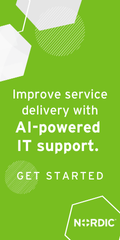












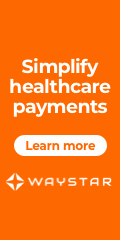









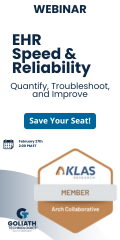


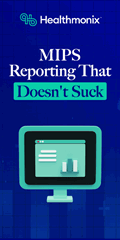




































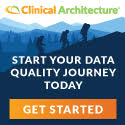
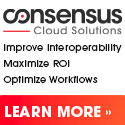



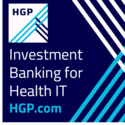






Only one way to solve that problem. Nationalize the lot of them https://thehealthcareblog.com/blog/2025/04/15/we-need-to-nationalize-to-prevent-fraud/